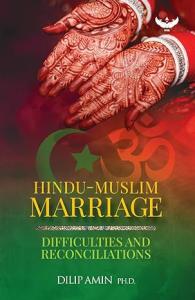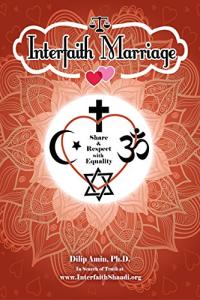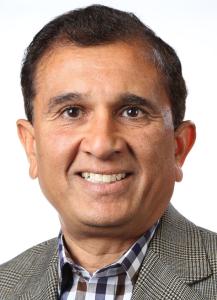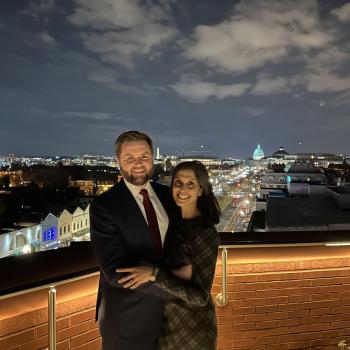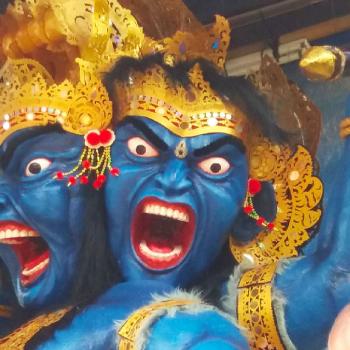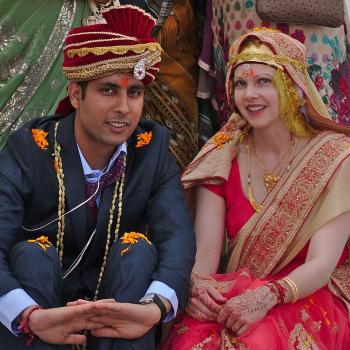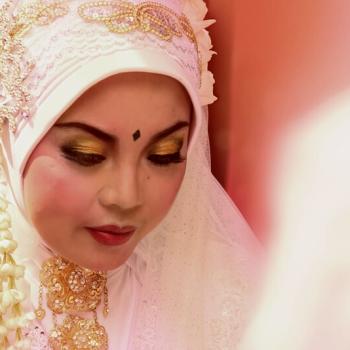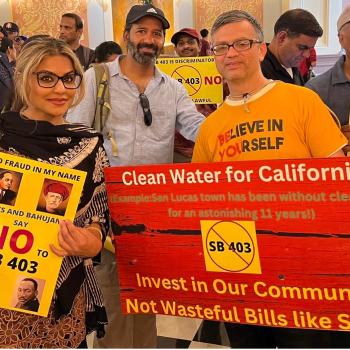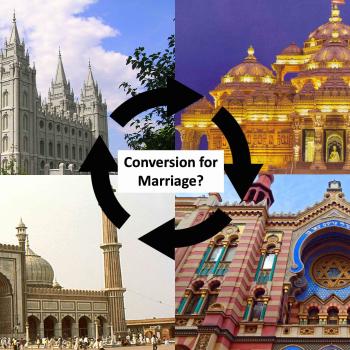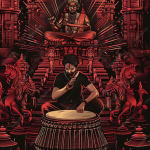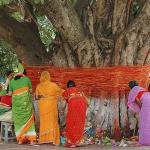In her best-selling book, Caste: The Origins of Our Discontents (2020), Ms. Isabel Wilkerson introduced a new definition of caste, expanding its application beyond traditional contexts. Wilkerson identified three primary examples of caste systems: the Third Reich in Nazi Germany, the caste system in India, and racial dynamics in the United States. She also briefly mentioned a fourth system related to intermarriage, though she did not elaborate further on this point. This article seeks to address this gap by exploring intermarriage as a distinct category within caste systems, using Hindu-Muslim marriages as a case study.
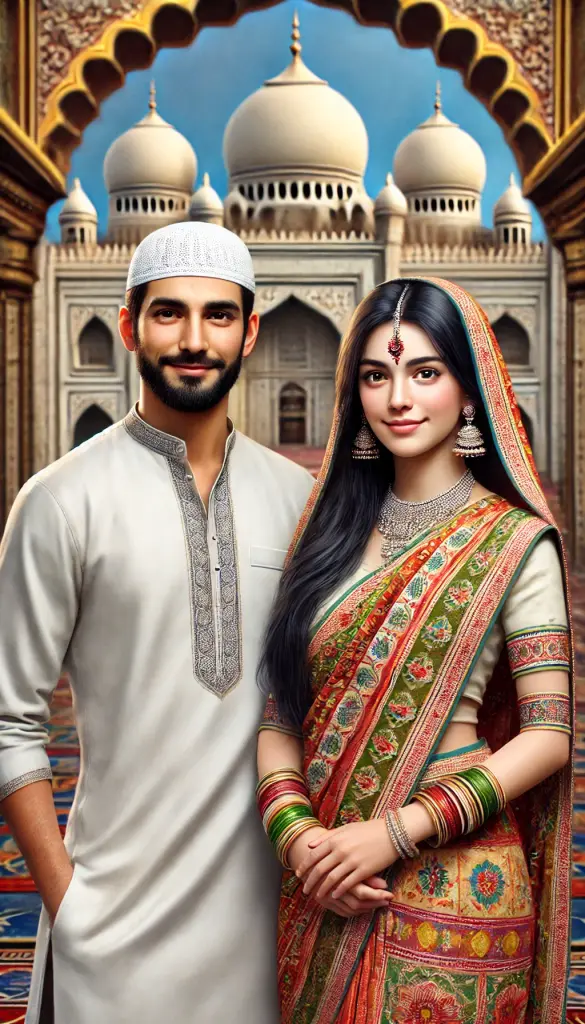
Four caste systems
Wilkerson defined three caste systems in her book and the author here has added a fourth one.
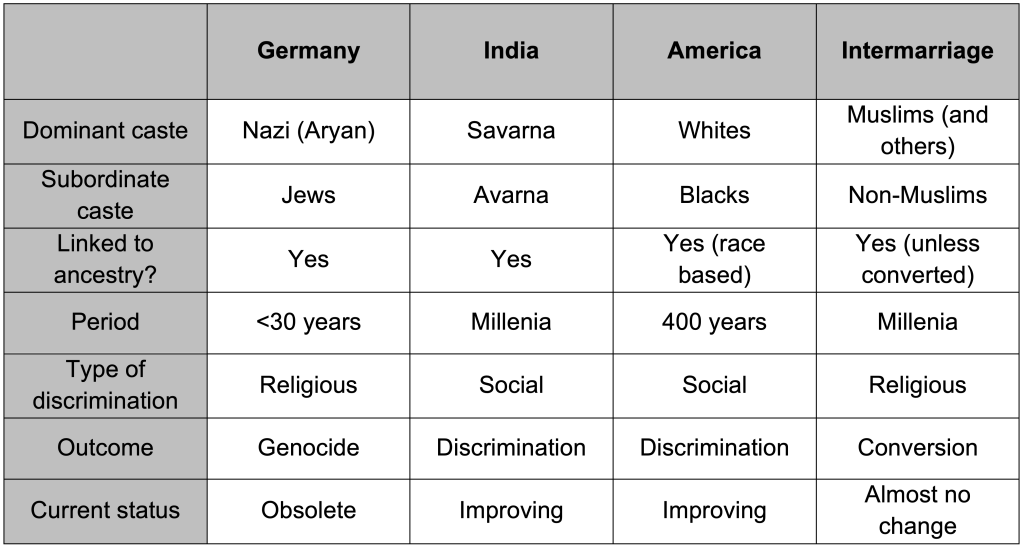
Wilkerson binomially categorizes societies into dominant or upper castes and subordinate, marginalized, or lower castes. The dominant caste employs various tactics to maintain their superior status, often at the expense of the lower caste. Intermarriage asymmetry is another type of caste discrimination. Intermarriage, which includes inter-caste, inter-racial, and inter-religious unions, is the arena where dominant castes exert their influence to uphold their dominance. This article examines Hindu-Muslim marriages to illustrate the concept of intermarriage as a caste system, where Muslims are portrayed as the dominant caste and Hindus as the submissive caste. Although superficially the difference is in religions, it has all the characteristics of a strict and rigid caste system.
This article contributes to a deeper understanding of how intermarriage functions within the broader context of caste dynamics, highlighting the complex interplay of power and hierarchy that continues to shape social structures.
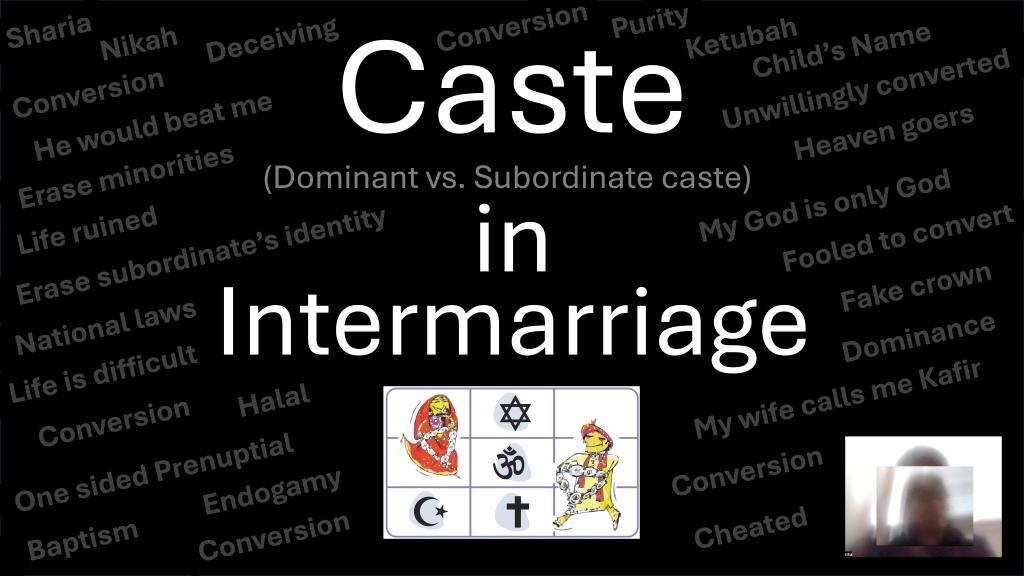
Hindu-Muslim Case Brief
Geetha and Muhammad (names changed for privacy), a Hindu woman and a Muslim man respectively, initially enjoyed a harmonious and secular marriage. They were eagerly expecting their first child when their relationship took a turn for the worse. Muhammad’s adherence to supremacist and dominant caste ideologies began to surface, severely straining their once-happy union. As a result, Geetha, now an innocent victim of these entrenched beliefs, is seeking a divorce. Her full video testimony, detailing her experience, can be viewed here, with time points cited as 0:00 min in the table below.
This case study underscores the insidious nature of caste dynamics within intermarriages, illustrating how deeply ingrained power structures and societal hierarchies can disrupt and damage personal relationships. By examining such individual experiences, we can gain insight into the broader implications of caste systems and their impact on social cohesion and personal well-being.
Dominant and Subordinate Castes
The author has categorized this couple and their faiths into dominant and subordinate castes based on specific characteristics described by Wilkerson in her book.
| Dominant Caste | Subordinate Caste | Reference | |
| Muhammad/Islam | Geetha/Hinduism | ||
| Colonized over the subordinate indigenous people? | Yes | No | |
| Believing in their religious superiority? | Yes | No | 46:30 |
| Religious books indicate superiority over the other faiths in intermarriage? | Yes | No | 25:13 |
| Prior history: One of the parents converted to the benefit of the dominant caste. | Yes | No | 38:38 |
| Made to change the name of the spouse? | Yes | No | 48:17 |
| Made to change the religion of the spouse? | Yes | No | 49:50 |
| Physically abused the spouse and justified it based on religious scriptures? | Yes | No | 1:06:55 |
| Imposed cloth codes on the spouse? | Yes | No | 1:05:12 |
| Imposed religious codes on the spouse? | Yes (sharia) | No | 7:20 |
| A restricted religious look of the spouse? | Yes (bindi) | No | 1:05:42 |
| Child names only from their own caste? | Yes | No | 1:03:01 |
| Child’s faith only as their own caste? | Yes | No | 1:03:29 |
| Restricted religious activity of the spouse? | Yes | No | 41:30 |
The author expects other dominant caste individuals (Muslims) to find faults with the lower caste person in this story to create doubts about the facts presented. Geetha has agreed to answer their questions in the comment section below and hopes to one day come forward publicly to share her painful life story.
Is Geetha’s story an isolated incident?
No, it is part of a historical pattern and well-entrenched in rigid practice today.
Over the past 19 years, the author has guided approximately 1,200 couples in relationships and has observed the same pattern in most cases, as reported by Geetha. All of his experiences are listed at InterfaithShaadi and summarized in his several books. Furthermore, Geetha’s story is typical in India, reflecting the past 1,000 years of rule by the dominant caste people. This includes Muhammad’s own Hindu mother, who converted to Islam for her intermarriage.
Author’s book covers. They are available at Amazon.
In line with Wilkerson’s message that the dominant caste uses immigration and marriage laws to control who can join its ranks and who will be excluded, the majority of Muslim-majority countries have enacted laws that benefit Islam in relation to intermarriage.
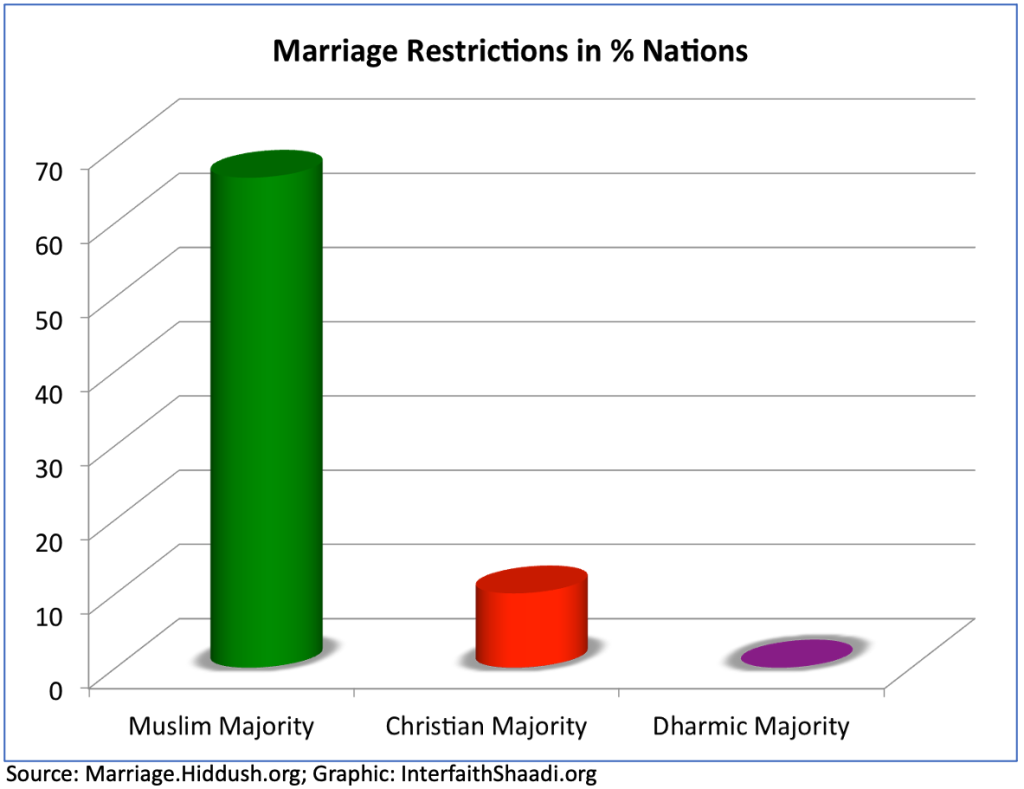
Caste-based discrimination has been illegal in Germany, India, and America for decades, but intermarriage caste discrimination remains legal in most Islamic countries, and no one has raised any concern about the pain of the subordinate people in love relationship with a Muslim.
Where there are no such anti-intermarriage laws, such as in Bangladesh and Pakistan, the dominant caste people violently take the law into their own hands to maintain their superiority in intermarriage. One cannot find a single Hindu-Muslim couple in either Pakistan or Bangladesh, and if one exists, they will be executed.
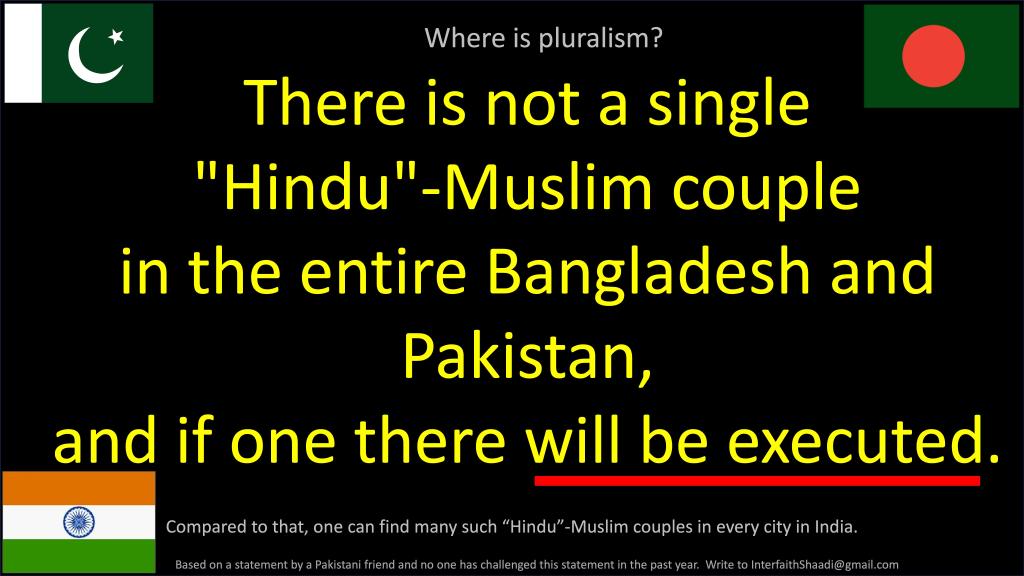
Many innocent young Hindu girls are abducted in Pakistan without any international outcry (Chingari, Sindh Renaissance). If the situation were reversed, with many Muslim girls being abducted by Hindus in India, it would become a serious international sensation.
Worst of all are the moderate Muslims who ignore speaking out publicly against these ongoing injustices against non-Muslim spouses in intermarriage.
Caste as defined by Wilkerson
Wilkinson’s book reads,
“A caste system is an artificial construct, a fixed and embedded ranking of human value that sets the presumed supremacy of one group (in our example, Muslims) against the presumed inferiority of other groups (Hindus or non-Muslims) on the basis of ancestry and often immutable traits, traits that would be neutral in the abstract but are ascribed life-and-death meaning in a hierarchy favoring the dominant caste whose forebears designed it. A caste system uses rigid, often arbitrary boundaries to keep the ranked grouping apart, distinct from one another and in their assigned places.”
“Throughout human history three caste systems have stood out. The tragically accelerated, chilling, and officially vanquished caste system of Nazi Germany. The lingering, millennia-long caste system of India. And the shape-shifting, unspoken, race-based caste pyramid in the United States. Each version relied on stigmatizing those deemed inferior to justify the dehumanization necessary to keep the lowest-ranked people at the bottom and to rationalize the protocols of enforcement. A caste system ensures because it is often justified as divine will, originating from sacred text (in our case, the Quran) or the presumed law of nature, reinforced through the culture and passed down through the generations.”
“The hierarchy of caste is not about feelings or morality. It is about power—which groups have it and which do not.”
“There is a fundamental belief in the purity of the dominant caste and the fear of pollution from the castes deemed beneath it. Over the centuries, the dominant caste (in our case, Muslims) had taken extreme measures to protect its sanctity from the perceived taint of the lower caste.”
“Caste is insidious and therefore powerful because it is not hatred, it is not necessarily personal.”
“Casteist is the investment in keeping the hierarchy as it is in order to maintain your own ranking, advantage, privilege, or to elevate yourself above others or keep others beneath you.”
“Caste system holds everyone in a fixed place.”
“One of the pillars of caste is endogamy, which means restricting marriage to people within the same caste. Endogamy, by closing off legal family connection, blocks the chance for empathy or a sense of shared destiny between the castes.”
All the points raised by Wilkerson are highly relevant in Geetha and Muhammad’s case and are employed to elucidate intermarriage as the fourth system of caste. The author has also included experiences of Kareen Kapoor, Shiv, Aarti and Raj Yerasi.
The author utilizes numerous statements and analogies put forth by Wilkerson in the subsequent discussions on intermarriage and caste dynamics below.
Caste Hierarchy
Islam’s deeply hierarchical caste system, dating back at least 1600 years, places Sunni Muslims at the apex, and kafirs (unbelievers) at the nadir. Sunni Muslims are regarded as the highest or purest in the caste hierarchy. Shia Muslims encounter challenges in marrying Sunnis and often must make concessions. Ahmadi Muslims are prohibited from practicing their faith in Pakistan as they are not considered genuine Muslims.
Jews and Christians, positioned in the middle ranks of the caste hierarchy, do not need to convert to marry a Muslim (upper caste) since they are considered ‘people of book,’ but their children must adhere strictly to Islam (to the ultimate benefit of the upper caste). This option is not extended to Hindus (lower caste), who are required to convert for the nikah ceremony. No Sunni Imam will officiate the Islamic-nikah of a Hindu-Muslim couple without the conversion of the Hindu party.
Similarly, a Catholic Church (middle caste) will not conduct a Christian wedding for a Hindu-Christian couple unless the Hindu party (lower caste) agrees to raise their children in the Christian faith through a prenuptial agreement (also read Katubah for Jewish faith).
About 10 rabbis told the author that they will not perform Jewish wedding if Hindu vivah is also planned. Further, children from such marriages must be raised in the Jewish faith.
An Ismaili Muslim (middle caste) imam may conduct the nikah of a Hindu-Ismaili Muslim couple without requiring conversion of the Hindu party, but may stipulate that Hindu wedding rituals not be performed in parallel.
Atheists/LGBTQ occupy the lowest rung on this caste hierarchy (considered untouchable). Hindus may be ranked slightly higher in the caste hierarchy compared to atheists, as they are at least believers, albeit in the ‘wrong’ gods. Atheism is viewed as an insult to Islam, with apostasy laws against atheists in many Islamic countries.
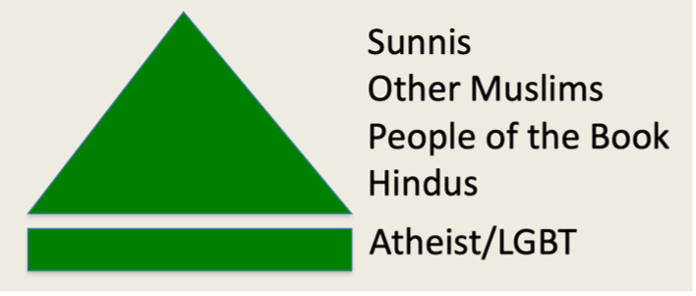
These caste hierarchies are cast in stone. Caste is fixed and rigid.
Geetha’s Testimonial
Geetha was raised in a traditional Hindu household and nurtured with values of independence and open-mindedness. The first romantic kiss by Muhammad, a Muslim, during college marked a significant turning point in her life.
Initially, Muhammad was accommodating and not particularly religious. Both Geetha and Muhammad shared a liberal outlook. They embraced each other’s religious practices, with Muhammad accompanying Geetha to her Hindu temple and Geetha dropping him off at his mosque for prayers. Later, their union was sealed through a civil wedding, and they enjoyed a loving married life.
However, everything changed once Geetha became pregnant. Muhammad began to assert his Islamic beliefs, gradually imposing restrictions on Geetha’s freedom, particularly concerning her Hindu religious practices. He insisted on a religious Islamic marriage ceremony (nikah), deceiving Geetha into converting to Islam. Subsequently, he introduced Islamic customs such as speaking Urdu, wearing the hijab, implementing Sharia laws in their marriage, consuming halal foods, and abandoning Hindu symbols like the bindi.
After the birth of their child, Muhammad unexpectedly gave their child a Muslim name. When Geetha refused to embrace Islam, Muhammad resorted to both physical and mental abuse, justifying his actions with references from the Quran. As noted by Wilkerson, violence often becomes a hallmark of a caste system at its breaking point.
Despite facing immense pressure, Geetha remained steadfast in her Hindu faith, unwilling to abandon her beliefs. Presently, although residing in a free country, Geetha lives in constant fear and oppression, with her only recourse being to seek divorce if society offers her assistance.
Obsession for conversion by the upper caste
Geetha’s life took a drastic turn once Muhammad’s parents were informed of their marriage and her pregnancy. They insisted on an immediate Islamic marriage (nikah) as required by Islam for the union to be considered ‘valid’ in the eyes of Allah. Muhammad, now delving deeper into Islam, started performing namaz daily and realized he had committed zina (adultery) by not having a ‘Muslim’ wife.
Geetha was deeply disturbed to discover that in her Islamist husband’s perspective, her status was akin to that of a ‘prostitute’ unless she converted to Islam. Moreover, Muhammad and his family deemed their child as ‘invalid.’ Despite immense pressure and manipulation to convert, Geetha remained steadfast in her Hindu faith.
Under coercion, Muhammad took Geetha to a mosque to marry her. There, she learned that her Hindu name was not acceptable on the Nikahnama and she was required to adopt a Muslim name. The imam instructed her to recite statements in Arabic. Under duress and to avoid embarrassing her husband, Geetha recited a few ritualistic Arabic words. Later, Geetha realized she had been misled into converting to Islam (shahadah) before the nikah. Muhammad feigned ignorance, claiming he was unaware as well. To placate her, he asserted that following Islam post-conversion was not mandatory. Apparently, the conversion was for the Muslim ummah (community) rather than for Allah. THAT IS CASTE.
During her pregnancy, Muhammad subjected Geetha to physical and mental torture upon realizing she would not embrace Islam wholeheartedly. He justified his actions by citing Quranic verse (4:34) permitting beatings.
Geetha was prohibited from displaying Hindu symbols in their home, compelled to alter her clothing style, discouraged from wearing the bindi, and prevented from performing Hindu samskaras essential during pregnancy. The objective was not solely to make Geetha accept Islam but to obliterate her Hindu identity, culture, and beliefs.
After childbirth, Muhammad deceitfully bestowed their son with a Muslim name and subjected him to circumcision, as per Islamic tradition. Muhammad imposed forceful Islamic dominance on his Hindu spouse, aiming to replicate his father’s success in converting his Hindu mother.
Wilkerson writes, the lowest spouse from the upper caste counts higher than the highest person from the lower caste (a slave girl is better than an unbeliever, Quran 2:221)
No matter how great you become in life, no matter how wealthy you become or what you do, if you are still a Hindu (kafir), you will not be accepted for intermarriage by the Islamist like Muhammad.
Intermarriage-caste system in India
In India, all religions maintain their own caste hierarchies and impose restrictions on intermarriages.
Even today, a significant percentage of Indians opt for arranged marriages, where parents play a significant role in selecting a life partner. The author himself entered into an arranged marriage some 45 years ago and has remained happily married ever since. However the author expects it to change in America starting with his children.
According to a 2021 Pew report, Muslims exhibit the highest level of conservatism in discouraging religious intermarriages (78%) compared to other faiths in India, such as Hindus (66%).
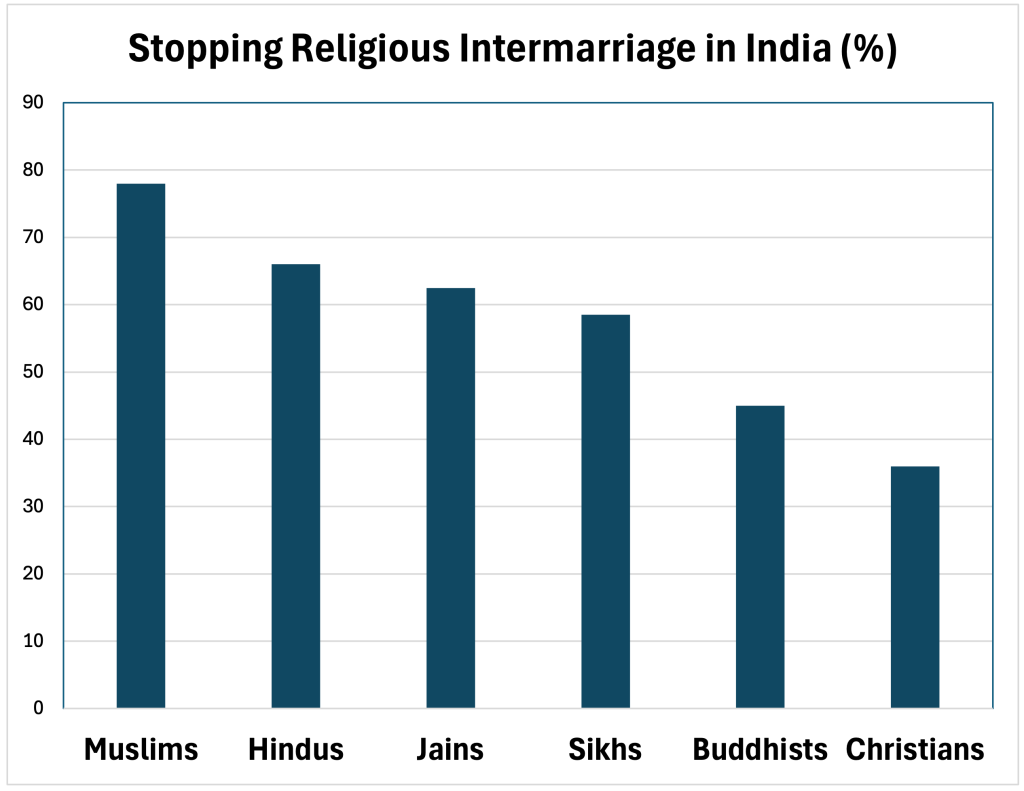
In the Muslim world, including India and South Asia, endogamous marriage within one’s social group (zat or biraderi), often between first or second parallel cousins, is predominant (Muslim Castes in India). Hinduism and other faiths restrict several degrees of consanguinity.
Hindu-Muslim couples in the Indian subcontinent frequently encounter significant challenges in getting married and sustaining their marital relationships. Over the past millennia, it has been customary that in a marriage to a Muslim, the Hindu party must convert, and children must be Muslim, ultimately erasing their Hindu identity in such an intermarriage.
Muhammad expected Geetha to adhere to this traditional practice, assuming she was aware of it. However, contrary to his expectations, Geetha demonstrates a different mindset.
Saif-Kareena’s Intermarriage in India
The submissive nature of individuals from the lower caste is evident not only in cases like Geetha’s but also in prominent figures like Bollywood actress Kareena Kapoor. When she married Saif Ali Khan, Kareena adopted Saif’s last name for herself and bestowed Muslim names upon their children, Taimur and Jehangir. This cannot be justified by citing the patriarchal system in India, as Saif’s sister, Soha Ali Khan, married a Hindu but did not change her name and named her daughter based on the Quran.
Saif had also converted his first wife, Amrita Singh, from Sikhism to Islam. Additionally, Saif’s mother, Sharmila Tagore, a former Hindu, embraced Islam for her intermarriage and raised her three children as Muslims. Numerous such instances of Islamic dominance exist, with Hindus typically occupying a subordinate position in intermarriages, exemplified by Kareena’s case. This caste system, where Muslims are automatically the dominant caste, remains a pervasive reality in India today, although this fact is unknown to the Western world.
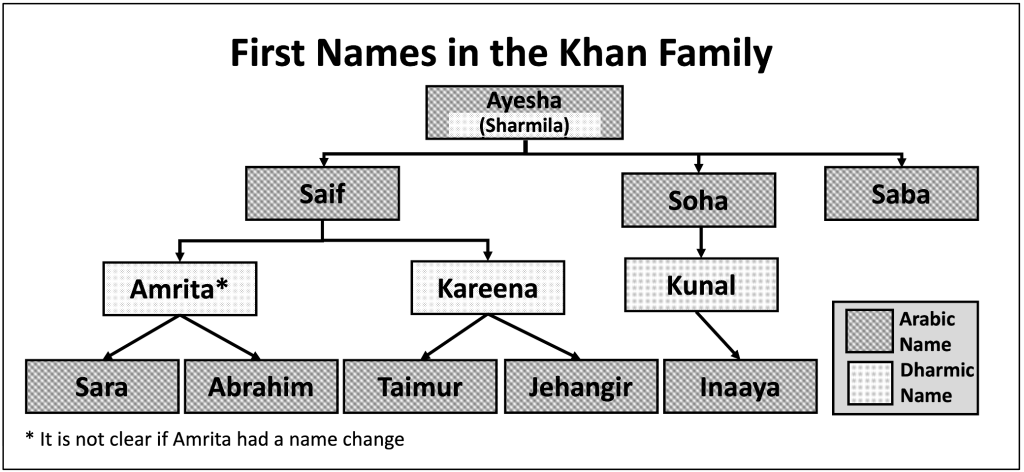
Numerous Hindus have expressed concerns to this author about the actions of individuals such as Sharmila, Amrita, and Kareena, questioning why these individuals’ personal happiness should be scrutinized. The author fully respects people’s choices and privacy. However, similar to Wilkerson, publicly available information is utilized here to elucidate the caste hierarchy.
The celebrity marriages listed above are voluntary. They are not to be confused with so-called “love jihad” where Muslim men surreptitiously marry non-Muslim women with the hidden intention of converting them to Islam. Even ABP News misquoted the author saying the case of Sharmila as a case of Love Jihad.
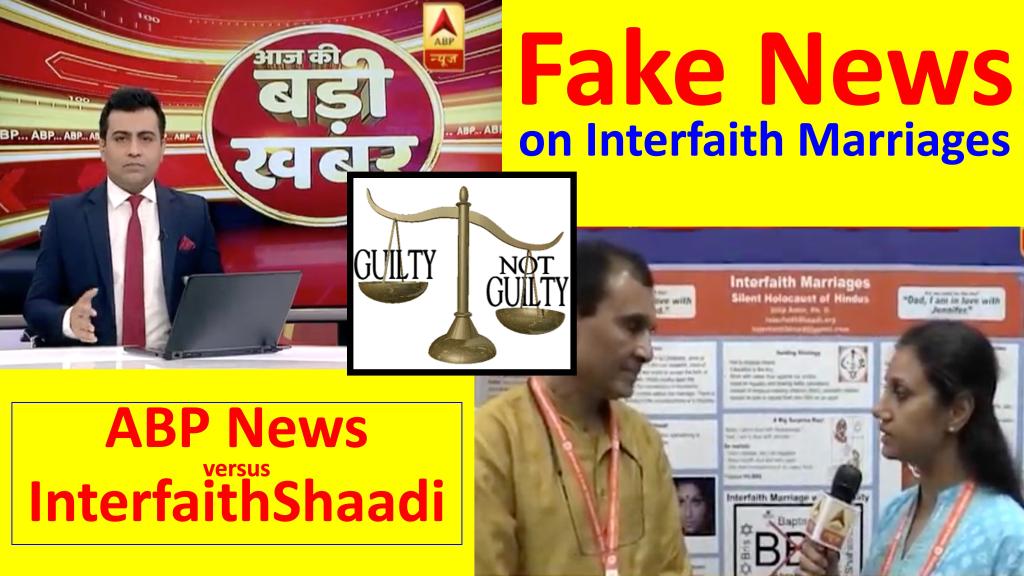
Intermarriage-caste system in America
The author’s own surveys reveal that 38% of Hindus and 45% of Muslims in America enter into interfaith marriages. Through 19 years of anecdotal experience in this field, it has been observed that churchgoers and devout followers of Islam often expect religious conversion from Hindus, who are perceived as belonging to a lower caste. Conversely, it is rare for a Sunni Muslim, considered upper caste, to convert to Christianity for a church marriage due to pressure from the Islamic community.
In the author’s experience, Christians and Jews, particularly if they are not regular attendees of church or synagogue, tend to be more liberal and accepting of Hindus in marriage, treating them with equality. However, in the majority of cases involving Muslims, even if they privately claim not to follow Islam rigorously, they still seek religious conversion for marriage under various pretexts, such as doing it for their grandmother, and insist on giving their children Arabic or Persian names. The pressure from the Islamic community plays a significant role here, overriding individual preferences. That is caste.
Muhammad may not have sabotaged his marriage by his own volition but may have been pressured by others to do so, highlighting the existence of a caste system rather than genuine freedom of religion.
The author has observed that even the most moderate Muslim interfaith leaders in America changed the name and religion of their non-Muslim spouse and expect only Muslim names for their children and grandchildren in intermarriages. When the author expressed a desire to end the practice of ‘religious conversion for marriage,’ these leaders defended it, asserting that individuals should have the freedom to change their faith. They appear confident that Islam will prevail over other faiths in intermarriages in America, echoing the confidence displayed by individuals from the upper caste, as described by Wilkerson. They choose to ignore the immense pressure exerted on the non-Muslim party in the marriage to convert, similar to Geetha’s situation.
The rigid caste system, though not readily apparent on the surface, is deeply ingrained, even in seemingly moderate societies. Two of the author’s Muslim scientist colleagues in San Francisco converted their spouses to Islam, as a prerequisite to marriage. Upon private discussion, they justified it as a necessary practice dictated by their society, without expressing any guilt. This illustrates the acceptance of such conversions in their casteist mindset.
The author has found that most Muslims harbor an obsession with converting their Hindu spouses to Islam, even if it is a fake conversion or mere formality. On the other hand, it is unheard of or nearly impossible for the Hindu spouse, considered lower caste here, to demand the conversion of a Sunni Muslim to Hinduism for marriage, and for the upper caste individual to acquiesce to such a request.
As Wilkerson stated, “In a caste system, there can be little alliance for the disfavored caste to appear equal.” The Hindu party, influenced by their inherent inferiority complex, is often content if they achieve even a semblance of equality in an intermarried life with a person from the upper class.
An example is Raj Yerasi (real name), a Hindu, who sought close-to-equality in his Jewish-Hindu marriage. However, after divorce, a New Jersey judge, possibly influenced by built-in caste-related prejudices, favored the ritual of the upper caste Jewish party, Bar Mitzvah, ruling against Raj and allowed a comment that meditation is not a religious practice of Hinduism. Such biases from the judiciary could harm individuals from lower castes and benefit those from upper castes to maintain their dominance in America.
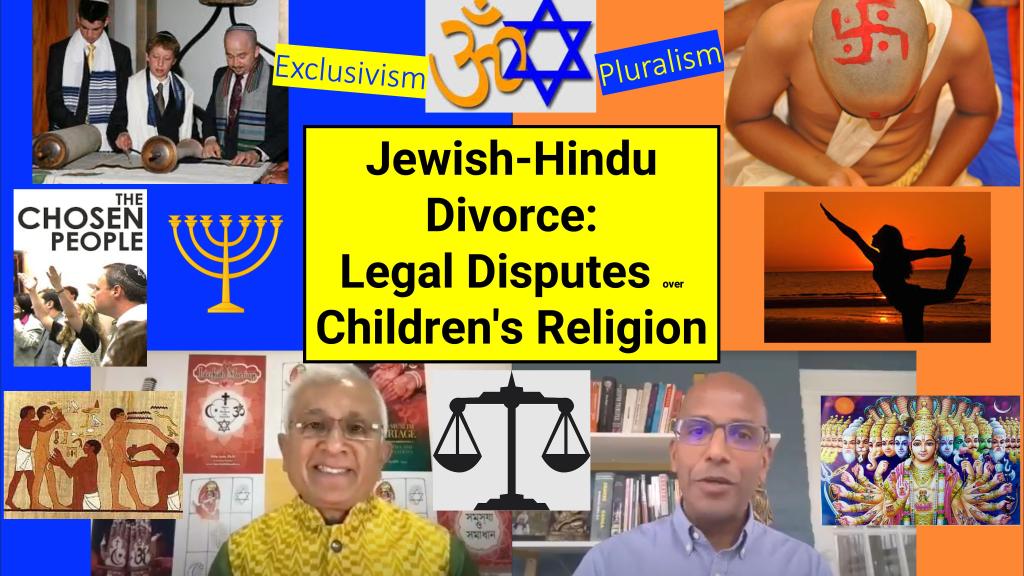
Faith and caste are different
Faith and caste are distinct entities. Recently, the author encountered Shiv in Ireland, who fled from Islamic supremacist ideologies prevalent in his native Malaysia. Shiv has been happily married to a Christian for the past 22 years, regularly attending church and Hindu mandir with his spouse, and raising their three sons. He happily attested that religions have never posed a problem in their lovingly married life. As long as society refrains from infusing caste supremacist ideologies, religious scriptures can be reinterpreted to accommodate the needs of the couple. A casteist cannot comprehend the joy of raising children in TWO faiths.
Geetha’s interfaith marriage was going great till casteist ideology was installed in Muhammad’s mind.
Intermarriage and caste are different
Intermarriage is not caste but actually it will help increase understanding between faiths and help reduce supremacist ideologies. Problem is not intermarriage but dominant faith casteist ideologies in it leading to asking for religious conversion for interfaith marriages.
Shiv, a Hindu, married a Christian and they are happily raising their three children in two religions. Caste is not an issue in their interfaith married life.
In Geetha’s case, intermarriage was not an issue till Muhammad’s parents installed (later on his own) casteist ideas in his mind ruining their otherwise happy marriage.
Aarti, in America, managed to shield herself from casteist Muslim in-laws in Pakistan (details later). Raj is now divorced and fighting legal battles in New Jersey. All victims from the subordinate caste wish they did not have to fight the spouse’s dominant faith’s casteist thoughts.
Religious conversion by own choice and caste are different
Bollywood actors Dharmendra and Hema Malini, both originally Hindus, converted to Islam to bypass Indian laws restricting polygamy among Hindus and got married. Their marriage is characterized by equality with no dominance by either party, rendering caste discussions irrelevant for such couples.
Ritu Belani, a 17-year-old, converted to Islam after being enlightened about it by her school teacher in the San Francisco Bay Area. Her Hindu grandparents were driven out of Pakistan during the India-Pakistan partition in 1947 but today her Hindu parents happily accepted Ritu’s decision. Ritu’s action had nothing to do with intermarriage, and caste discussion is irrelevant here.
Where did things go wrong in Geetha-Muhammad’s relationship?
During the dating phase, Muhammad appeared calm and soft-hearted, with more Hindu friends than Muslims. Geetha interpreted this as a sign of his liberalism.
Geetha was under the impression that Muhammad’s mother, who was Hindu before her marriage and converted for marriage, would provide him with a connection to both religions and relatives, thus enhancing their planned interfaith marriage. However, this assumption proved to be incorrect.
Muhammad never objected to Geetha’s appearance or activities, leading her to believe that he respected her and allowed her privacy for her beliefs. Little did she know that he was biding his time to reveal his true intentions only after she had fallen in love.
During their early dating period, Muhammad never broached the topic of Islam. At one point, he even expressed remorse for being a Muslim, citing Islam’s restrictions on interfaith marriages. Geetha interpreted this as indicative of a secular relationship between them.
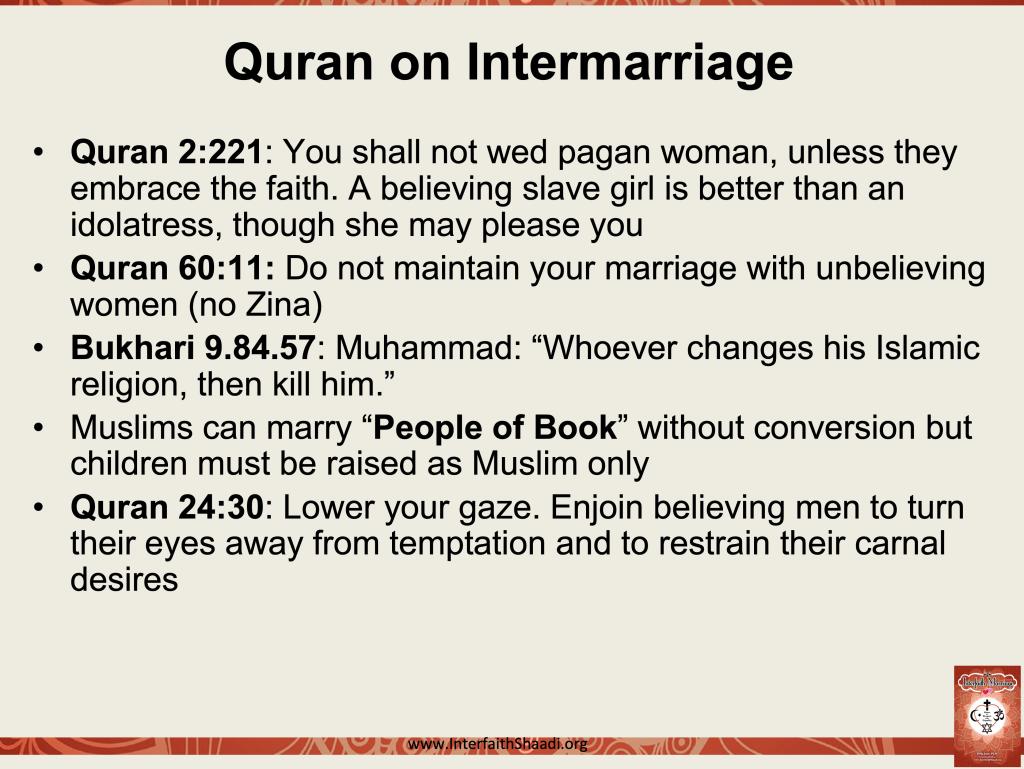
He visited her Hindu mandir, and she took him to a mosque to pray. Geetha believed they had a genuine pluralistic relationship, where both faiths would be equally respected.
Why didn’t Geetha realize earlier that she was ensnared in a trap? Wilkerson explains, “People who do not know that they are captive will not resist their bondage.” Despite defying the wishes of her loving parents and her Hindu community in India to marry this Muslim, Geetha found herself in a foreign country with visa issues, seemingly losing her critical thinking abilities or the courage to fight against injustice. ‘Self-pride’ was no longer a card in her hand.
Why did otherwise intelligent and educated Geetha fail to recognize the true nature of Muhammad? Wilkerson’s analogy of an old house with an unseen skeleton, representing a caste system that operates at its core like studs and joists, sheds light on this. Geetha, like someone admiring the exterior of a beautiful home, cannot see these internal structures. The truth only becomes apparent when one starts breaking down walls, as Geetha did after becoming pregnant.
In Wilkerson’s words, one should not judge a book by its cover, nor assume what lies inside before reading it. The author here hopes that all interfaith couples in love will make fully informed decisions about marriage.
Why did Muhammad, otherwise a decent man, change? Wilkerson’s analogy of an actor in a drama is apt here: “You are not yourself. You are not to be yourself. Stick to the script and to the part you are cast to play, and you will be rewarded. Veer from the script, and you will face the consequences. Veer from the script, and other cast members (here, his parents and the Islamic community) will step in to remind you where you went off-script.”
Muhammad’s mother, originally a Hindu, converted to Islam to marry his Muslim father. This had been the standard practice in Hindu-Muslim marriages in India for the past 1000 years, with only the Hindu party, whether male or female, converting. Muhammad assumed that Geetha would also follow in his mother’s footsteps, as it had been the standard operating procedure (SOP) for generations. He dropped many indirect hints to Geetha about her expected conversion, but she innocently interpreted them as irrelevant stories with no bearing on their relationship.
They never received blessings from their parents for their relationship. Instead of facing reality, this couple decided to run away to another country to get married. Apparently, it was a grave mistake on the couple’s part.
How can one predict or manage the deep-rooted caste-related issues within intermarriage? Once again, let’s follow Wilkerson’s wisdom, “Just as the studs and joists and beams that form the infrastructure of a building are not visible to those who live in it, so it is with caste.” And “some pathogens could never be killed, only contained. … It seemed these contagious diseases could not be destroyed, only managed and anticipated, as with any virus, and that foresight and vigilance, the wisdom of never taking them for granted, never underestimating their persistence, was perhaps the most effective antidote, for now.”
Geetha’s dilemma
It was Geetha who proposed marriage to Muhammad because he was a kind-hearted man. Geetha felt very safe with him and believed he possessed all the qualities a girl could desire in a life partner. Muhammad was always supportive and helpful to her. With all these, she made the difficult decision to leave behind her dear parents, friends, and relatives to join Muhammad for life.
Initially, their married life was going well. However, everything changed when Muhammad’s parents became involved and instilled casteist ideologies in his mind. Suddenly, the baby inside Geetha’s womb was deemed ‘invalid,’ and her status in their civil marriage was belittled to less than that of a prostitute (who at least gets paid!). Now, Geetha faces physical torture and assault, justified by Muhammad’s interpretation of the Quran. The compassion and humanity she once saw in Muhammad seem to have vanished. Despite still caring for him, Geetha feels compelled to consider divorce due to the ruinous effects of the casteist system on their marriage.
Perhaps her greatest dilemma lies in facing her parents and admitting that they were completely correct about her choice of a life partner.
Although the author offered to mediate and salvage the marriage, Geetha expressed exhaustion and disillusionment with her marriage. It appears that fighting against the entrenched caste system is an uphill battle for any individual.
Muhammad’s dilemma
Muhammad is inherently a good human being, except for his adherence to casteist Islamist ideologies. Initially, he expressed discomfort with Islamic teachings and even lamented being Muslim. However, he now diligently performs namaz every day and observes fasting during Ramadan. With these new beliefs guiding his life, there seems to be no space for a non-believer (kafir) like Geetha. Infused with supremacist casteist ideologies, he appears to have lost touch with his humanity.
It was Geetha who proposed to Muhammad, a decision made easier by her genuine and pure love. However, it seems that Muhammad’s focus may have always been on strategizing to convert her, rather than fully embracing their love. Perhaps it was his premeditated intention to emulate his father’s actions, thus explaining his proximity to Hindu girls like Geetha and her friends during their college days.
Following their marriage, Muhammad faced a significant dilemma: unlike his mother and many of his Hindu grandmothers from the past millennia, Geetha was not submissive. Frustrated by this, Muhammad began pressuring Geetha to convert to Islam at any cost, feeling the urgency to achieve this before the arrival of their baby. Through deception, he managed to persuade Geetha to convert and proudly announced it to his parents and the Islamic community. However, despite her conversion, Geetha remains steadfast in her Hindu identity, frustrating Muhammad further. In his frustration, Muhammad resorted to physical and mental abuse towards Geetha, using Quranic justifications to justify his actions.
Upper caste and lower castes: Role of parents and communities
Wilkerson delineates how individuals and societies of the upper caste perpetuate their dominance over those of the lower caste, ensuring their supremacy persists for generations. Moreover, as a result of enduring domination by others (in this case, Hindus under 1000 years of colonial rule), the lower caste community (represented by Geetha and her parents) becomes so resigned to injustice that they fail to recognize it.
Geetha’s parents were cognizant of her marriage but lacked the authority to influence the couple. These lower caste parents understood their daughter’s unhappiness but felt powerless to intervene, resigning themselves to silence. This narrative mirrors the typical experience of lower caste individuals vividly described by Wilkerson in her book.
With a millennium of experience, the Hindu community has learned that in interfaith marriages with Muslims, the Muslim spouse typically erases the Hindu identity of the Hindu partner. Across India, there are countless instances in every town where Hindu spouses have converted to Islam. Considering everyone in their village in India assumed the fate of Geetha after marriage to a Muslim, it was a matter of immense shame and guilt for her parents and siblings.
Geetha’s parents endured profound anguish and social ostracization within their Hindu community. Faced with such disgrace, they withdrew from their community, consumed by bitterness and lamenting their fate. Today, after knowing and seeing everything that Geetha is going through, it literally pushed them into depression. They are worrying all the time about Geetha and wishing to get her out of this trap. However, being living in a small village in India and with limited means, they are helpless.
At one point, Geetha, seeking to appease her parents, wished to send them a photo of herself wearing a bindi beside Muhammad, but he declined. Such a gesture would reflect poorly on Muhammad, highlighting his failure to convert her to Islam. Muhammad prioritized asserting his upper caste dominance over his wife’s happiness.
Muhammad deliberately concealed the relationship from his parents, aware that they would not approve. When they learned of Geetha’s pregnancy, they exerted forceful influence, compelling Muhammad to convert Geetha within weeks. Throughout these decisions, Geetha’s desires were disregarded, as she was viewed as a disposable individual of the lower caste.
Instead of genuinely sharing the beauty of his Islamic faith with Geetha, Muhammad resorted to orchestrating a fake conversion merely to appease his parents and impress his Muslim community. This is caste and not faith.
Unfortunately, the imam at the mosque, instead of acting as a beacon of truth, became complicit in deceiving Geetha into converting to Islam. In the mindset of this upper caste imam, there was likely no inclination to question Geetha’s reluctance to convert, as long as the conversion was achieved.
For these heaven goers, converting Hindus is viewed as a meritorious act in the eyes of Allah and a way to gain prestige within their community. Geetha’s conversion would enhance the imam’s reputation, serving as another notch on his belt. In their perception, they are extending a benevolent gesture to a lower caste individual by offering them the opportunity to ascend to heaven on Judgment Day.
Muhammad and his parents’ motivations were not rooted in genuine religious conviction but rather in a desire to assert Islamic dominance over Hinduism and uphold their privileged caste status in society. Their actions were driven by a quest for social status rather than a sincere faith in God.
In Wilkerson’s depiction of caste dominance, she highlights the requirement of submission from the subordinate individual not only to the will of the master (in this case, the husband) but also to the dictates of the broader community (the Islamic ummah). This underscores the pervasive nature of caste dynamics and the extent to which individuals are beholden to societal expectations and norms.
Similarities between African-Americans and Hindus after years of slavery/gulami
Wilkerson’s explanation of Stockholm syndrome sheds light on how individuals may develop a bond with those who mistreat them, often as a means of survival. This phenomenon can lead people to align themselves with those in power and conform to their expectations in order to gain approval or avoid further harm.
The author got his last name, AMIN, in 1803 when his great Hindu grandfather, Nandlal Patel, saved the life of Muslim king Nur Khan and suppressed other Hindus who were revolting against the Muslim king. It is possible that Nandlal took this step to ‘gain approval or avoid further harm.’
Educated African Americans may not support their own underprivileged community (Wilkerson: “bend to the will of caste and put down their own, to be first among the lowest”) but will go out of their way to please White Americans, even though that person may be a newly convicted felon.
In the context of Hindu-Muslim marriages, the above dynamic becomes evident. While Hindu parents may scrutinize and criticize their own caste-based daughter-in-law, they may bend over backwards to please their Abrahamic daughter-in-law, reflecting a deep-seated sense of submission ingrained over centuries of subjugation. Gujarati Indians, known for their astute business acumen, may haggle fiercely over financial matters relating to buying a house or a car, but may not inquire about the religious faith of their grandchildren (meaning having Baptism, Bar Mitzvah or Shahadah/Sunat, religious circumcision, BBS) from an interfaith marriage that will inherit their wealth, underscoring a lack of self-esteem when dealing with Abrahamic due to historical oppression.
In Hindu-Muslim marriages, the Muslim party will often outright ask for conversion (e.g., Muhammad with Geetha, Saif with Amrita) or, at a minimum, will want to ensure that future generations are raised as Muslims by giving children Muslim names (skip generation conversion; e.g., Saif with Kareena, Saif’s sister Soha). On the other hand, Hindus typically do not even ask for equal status for their religion. For example, Geetha did not clearly express her wish to raise their child as half Hindu or to give him a Hindu name. Aarti, another Hindu woman, converted for the nikah and gave her children Muslim names. Additionally, hiding her beloved Lord Ganesh in her own house in America was not considered an insult or restriction to her religious freedom. Shiv signed the prenuptial agreement for his church wedding and baptized all three of his children. Raj happily agreed to the Bris and Bar Mitzvah of their children. After their divorce, an American judge ruled that time needed for the Bar Mitzvah classes should take precedence over his Hindu meditation practice with the children.
In all these cases, the Hindu parties were more educated and earned more money compared to their spouses. All these Hindus also continue to exhibit traits of submission ingrained by centuries of societal conditioning.
The author ponders how many generations it will take for marginalized groups like African Americans and Hindus to assert their demands for equality in intermarriage, if not to assert dominance themselves.
End the casteist practice of religious conversion for marriage
This millennia-long practice of asking a spouse from a lower caste to change religion for marriage, or to sign a prenuptial legal contract to raise children only in the dominant faith, is still widely practiced. People like Geetha, Aarti, Shiv, Raj, and many others submit to such irrational demands under undue pressure, without understanding how it could hurt them later, or are even fooled into submitting to it. For people from the upper caste, it is a way of policing those from subdominant religions to prevent them from later having freedom of religion or changing their minds (Bukhari 9.84.57).
Religious conversion for marriage is imposed on people in subordinate positions to increase the ranks of the dominant caste. It is a fake crown placed on people of a submissive caste, making them feel they are now heaven-bound. This is a superficial difference created by applying a new religious label to the victim party, which has nothing to do with who they are inside.
Every spiritual tradition says to love your neighbor as yourself. If so, why is there a need to convert for marriage? Why not marry the person you fall in love with and keep them just as you found them?
Wilkerson writes that a caste system persists in part because we, each and every one of us, allow it to exist. If enough people buy into the lie of natural hierarchy, it becomes the truth, or is assumed to be.
Is the irrational practice of religious conversion for marriage alive and well today? You cannot solve anything that you do not admit exists, which could be why some people may not want to talk about it: it might get solved.
It is hoped that people born into the dominant religions can choose not to dominate. People born into subordinate faiths can resist the box others force upon them. Just as the twelve-year reign of the Nazis was created, it can be dismantled. It is the actions, or more commonly inactions, of ordinary people that keep this casteist practice of religious conversion for marriage going
Caste politics in America
Politicians like California Senator Aisha Wahab and certain organizations such as Equality Labs and Hindus for Human Rights advocate for new laws against the caste system. However, the author believes such legislation is unnecessary, as caste-related discriminations are already addressed under existing ancestry laws (Governor Newsom of California). Proposed laws like the vetoed California caste bill SB 403 may only exacerbate fears of litigation, thereby discouraging couples considering intermarriages in the future. Proponents of these laws may harbor hidden intentions, although not explicitly stated, to oppose the Jati and Varna system of Hinduism. However, they overlook an elephant in the room, as outlined here. Education, rather than legislation, is the key to combating caste dominance in intermarriages.
The end results
Caste imposes distinctions where none exist in the eyes of God.
In the case of Geetha and Muhammad, they, their son, and their extended families will pay the price of the consequences of Muhammad’s Islamic casteist supremacist ideologies. Caste has marred what was otherwise a beautiful and happy marriage.
While Nazi Germany’s caste system has been officially abolished and significant strides have been made in addressing caste issues in India and America, the intermarriage caste system persists unabated. Indeed it is barely noticed.
Moderates within the Muslim community often remain silent on the issue of conversion practices, either because they benefit from the existing hierarchy or are complacent in perpetuating it. It is hoped that true moderate Muslim youth will begin to speak out against discriminatory practices in intermarriages.
Geetha’s story serves as a poignant reminder of the real dangers inherent in intermarriages. The suffering experienced by lower-caste but not submissive individuals like Geetha mirrors the pain endured by marginalized people in Germany, India, and America, as vividly described by Wilkerson.
Key Takeaways
- As per Wilkerson’s new definition, the author is proposing intermarriage as a caste system.
- The Quranic teachings favor endogamy and laws have been enacted by many Islamic nations against interfaith couples. The Muslim community often perceives interfaith relationships as a threat to their ‘purity’ and resorts to imposing conversion on the non-Muslim party to resolve the perceived issue.
- In contrast, Hindus tend to be submissive in the caste hierarchy regarding inter-religious marriages. They may seek only close-to-equality in such relationships.
- Like Wilkerson said, endogamy impedes empathy or a shared sense of destiny between castes.
Tips to inter-relationship couples
- It’s indeed possible to enjoy the richness of two religions in an interfaith marriage, like Shiv does, by embracing both faiths and their traditions. However, it’s crucial to make informed decisions and be transparent about expectations and boundaries, especially regarding religious practices and beliefs.
- Remember, it’s not the individual or the religion itself that poses a threat but the deeply ingrained caste system. Transparency and honesty in communication, both between the couple and with their families, are essential to navigate the complexities of interfaith relationships.
- If you find yourself entangled with someone who adheres to casteist ideologies, it may be better to end the relationship rather than subject yourself to continued suffering. Before committing to marriage, ensure you’re fully aware of the potential challenges and are prepared to address them together as a couple.
- Even with careful consideration, there’s always a risk of deception, like with someone as Muhammad. Stay vigilant and never underestimate the persistence of caste-related issues in intermarriages. It’s essential to remain proactive and resilient in facing these challenges.
.
Disclosures: The discussions surrounding intermarriage, including those related to caste dynamics, can be applicable to various types of interfaith marriages, inter-denominational marriages, and inter-race marriages. It’s essential to recognize the nuances and complexities specific to each situation while understanding that these discussions are limited to the context of intermarriage dynamics and do not generalize to entire communities or faiths in all other scenarios.
Additional Reading Material
Couples suffering from caste-supremacist ideologies
The author has guided 1200+ intermarriage couples over past 16 years at InterfaithShaadi. There are some 25,000+ viewpoints by different people. All cases are available for your review. You can see that religious conversion is the major theme in most cases.
Pain and sufferings after failed love, including depression and suicidal ideologies (32 posts)
Muslim-Hindu relationships (940 posts)
Muslim-Christian relationships (144 posts)
Muslim-Jew relationships (8 posts)
Muslim-Jain relationships (37 posts)
Muslim-Sikh relationships (80 posts)
Muslim-Brahmin relationship (53 posts)
Malaysian Muslim relationships (96 posts)
Christian-Hindu relationships (276 posts)
Marthomite Christian-Hindu relationships (37 posts)
Jew-Hindu relationships (35 posts)
Hindu-Sikh relationships (6 posts)
Hindu-Jain relationships (22 posts)
Hindu-Parsi relationships (12 posts)
Inter-race relationships (24 items)
Within-faith relationships (3 posts)
Individual’s relationship experiences
I fell for a Muslim guy in college…thank god I got saved! – a Hindu girl narrates her story
Hindu lynched to death in Bangladesh
My wife calls me Kafir… I wish I die
He would beat me now and then, I want to end my life
Hindu ceremony in secrecy is bothering me
Orthodox love in progressive city: A case study of a Muslim-Hindu relationship
Hindu: Finally I Have To Unwillingly Revert To Islam
Muslim could not understand the concept of Islam
About to marry a Muslim boy, but now no more
Me converting, of course, not her!
He expects me to convert to Islam
Muslim will marry me only if I convert
I pray for his conversion to Islam in every namaz
I am not going to change my religion at any cost
Is it possible that I convert to Islam just as a formality?
Hindu: I have decided to take up Islam
I told him I will not change my religion
My girl friend is a pure Muslim
How to convince my Muslim parents?
I am a Brahmin girl dating a Shia Muslim
How can I convince my Muslim parents that this is not going against Islam?
A Muslim girl: My boy friend is a Hindu–Rahul or Javed?
Muslim: My Hindu Boy Friend Left Me!
How Do You Convert A Civil Marriage (In UK) To Muslim Marriage In Singapore?
Hindu Girl In Love With A Muslim For 6 Months
Muslim Does Not Want To Marry Me Because I Am Hindu
Muslim: I Am Ready To Convert To Hinduism
Hindu And Muslim Lovers Are Not Religious
Chinese Malaysian To Marry Iraq Muslim In Singapore
Brahmin Boy-Muslim Girl Relationship
Muslim: My Boy Friend Is Ready To Convert To Islam
I (Hindu) Want Her (Muslim) To Convert
Buddhist Vietnamese Marriage Registration With A Malaysian Muslim
Pakistan: Forced conversions (Sulema Jahangir)
My Hindu Mother Married To A Muslim
Brahmin in Relationship With A Muslim Boy
Sikh Girl Fallen In Love with Muslim
Hindu Girl Eloped With A Muslim
I Am Brahmin Wants To Marry A Muslim Guy
Hindu In Love With Pakistani Muslim
Hindu-Christian Marriage Is NOT Possible
Hindu: I Did Not Convert Marrying A Muslim
Muslim Girl Is Willing To Convert Into Hindu
Hindu MUST Convert To Marry A Muslim
Punjabi Boy In Love With A Malay Muslim
Hindu Pandit In Love With A Muslim
A Sikh In Love With A Muslim In America
Hindu: My Boy Friend Is Kashmiri Muslim
Hindu Girl: I Have Feelings For Muslim
A Muslim Is Asked To Convert To Jainism
A Hindu Girl In Love With An Arabic Muslim
Malaysia: Hindu Couple’s Daughter Declared Muslim, Forced To Join Islamic Studies Class
Hindu-Muslim Love Is Not Accepted By Both Families
Hindu-Muslim Love: What To Do Now?
Hindu Divorcee In Love With A Muslim
Pakistani Muslim Student With My Sikh Mom
Five Points Marrying A Muslim Man
Hindu: How Can I Marry An Iranian Girl?
Readers, as you can see, the list is endless. Read some 1000 more such cases at InterfaithShaadi.
Authors articles at Patheos related to caste issues in intermarriages:
Hindu-Muslim Marriage, Circumcision, Kafir, Love-Jihad, Status of Hindus in Muslim Majority country, Malaysia, Pluralism
Hindu-Christian Marriage, Follow Jesus not the Church
Marriage and Divorce Laws , Legal Implications in Interfaith Marriages
10-point of intermarriage, 15 FAQ, Equality for Happiness
Authors books
Interfaith Marriage: Share and Respect with Equality (2017)
Hindu Vivaha Samskara (2011, coauthor)
Hindu-Muslim Shaadi: Samasyayen Aur Samadhan (Hindi Edition)(Mar 2023)
Hindu-Muslim Marriage: Difficulties and Reconciliations (Nov 2023)
Translations in Bengali and Malayalam are pending.



